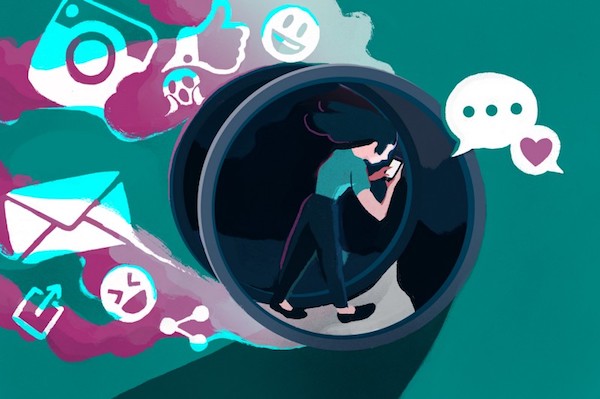Passive consumption is ruining technology — but there’s still hope for redemption
A bicycle for our minds. That’s how Steve Jobs described the potential of the computer back in 1991. He envisioned a powerful tool that could stretch our minds and bring limitless opportunity to everyday people.
Fast forward to 2018 where the number of smartphone users worldwide is estimated to exceed 2.5 billion. So what does this widespread technology use look like? We have teenagers scrolling through Instagram with their eyes glazed over, and couples on dates paying more attention to their screens than the person sitting across from them. Phones and computers were supposed to be a bicycle for the mind… but this looks less like a bicycle and more like a hamster wheel going nowhere.
This isn’t just another cautionary post about our smartphone addictions. Instead, this is about recognizing where the leaders in tech went wrong, and challenging ourselves as independent makers and creators to fix it.
The App Store is an ecosystem for passive consumption

For the best visualization of the problem, look at the iOS App Store. Our shrinking attention spans and growing appetites for content have created an ecosystem that favors passive-use apps. The top charts for iPad apps mostly feature casual gaming, social media, and entertainment apps. There is infinite content available, and infinite ways to consume it.
The more that we eat up this content, the greater incentive there is to create and invest in apps that build on the ecosystem. “Truth is, we like investing in things that are addicting,” tweeted Ross Gerber, Apple shareholder and CEO of Gerber Kawasaki Wealth. It makes sense — feed our addiction and we’ll keep buying your products.
Tech leaders are the problem, not the solution
But there’s increasing evidence that this passive technology use is harmful. A psychological study found that middle schoolers who are heavy users of social media have a 27% higher risk of depression. And addiction to mobile gaming is now considered an impulse control disorder (in the same category as gambling addictions) because of the effects on the brain’s dopamine levels.
Earlier this year, a highly publicized open letter to Apple urged the company to “set an example about the obligations of technology companies to their youngest consumers.” It essentially asked Apple to take a closer look at the dangers of its own technology — a hollow request for a company whose revenue is driven by our constant passive consumption.
Even Facebook finally admitted that passively scrolling through your feed can have negative mental health effects. And Facebook’s solution? Spend more time engaging with friends online — “especially sharing messages, posts and comments.” In other words, interact more with the platform.
Mark Zuckerberg also promised to alter the newsfeed algorithm so that users will “see less public content like posts from businesses, brands and media.” But how will the impact be measured? It’s an unfortunate truth, but it would be foolish to rely on tech leaders like Apple and Facebook when their business models rely on our addiction.
Digital mindfulness starts with the underdogs
Our phones, tablets, and laptops have immense creative potential that is just waiting to be unlocked. This is our opportunity to be more than just hamsters on the wheel, and actually start to create. We — the independent makers and creators — are the real change agents for restoring technology to the powerful tool that Steve Jobs envisioned.
Just a few decades ago, owning powerful design and computing technology wasn’t feasible for the average person due to the exorbitant expense. But today, high-quality technology is much more accessible. Aspiring filmmakers can shoot and edit videos on their phones. Artists can paint in watercolor using a stylus. Entrepreneurs can build their business plan right on their iPads.
The greatest movements start with the underdogs, and that’s why we’re starting Bicycle for the Mind — a publication about choosing creation over consumption. We’ll be exploring topics around digital mindfulness (setting discipline around our technology use) and engaged creation (seeking out better tools and workflows for creating).
If you’re passionate about using technology to work more productively, creatively, and deeply, please join our movement. Let’s bring back the bicycle for the mind





